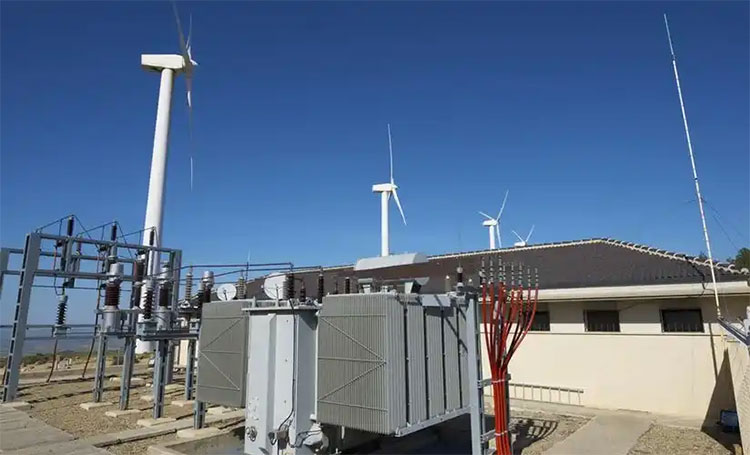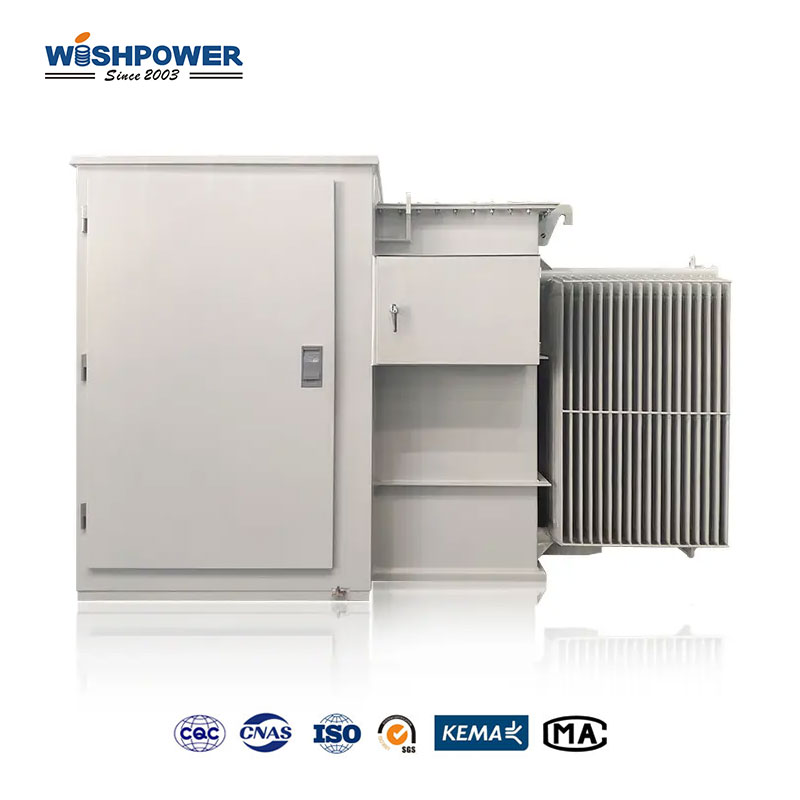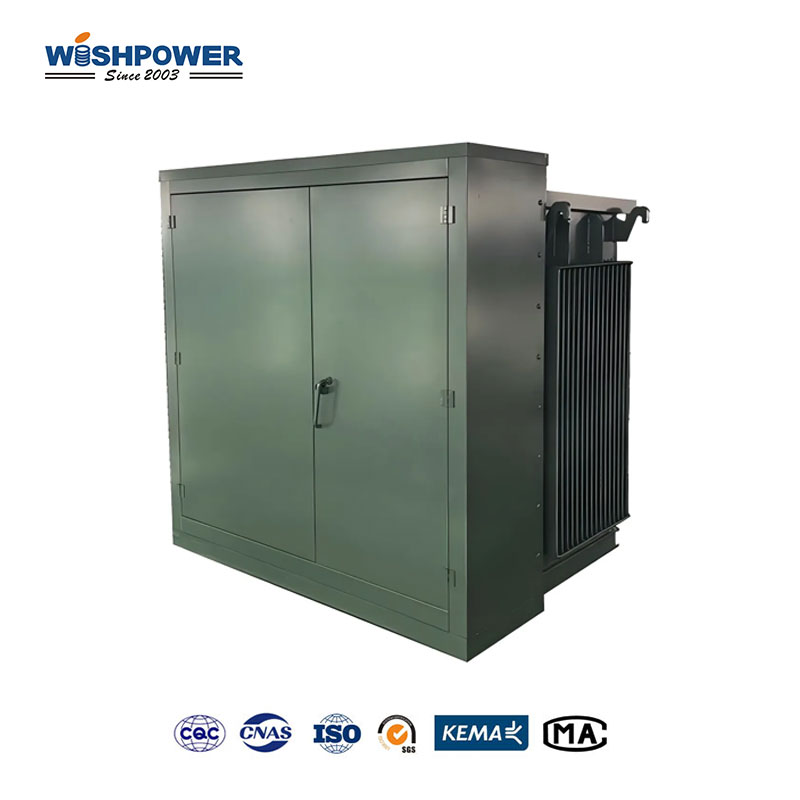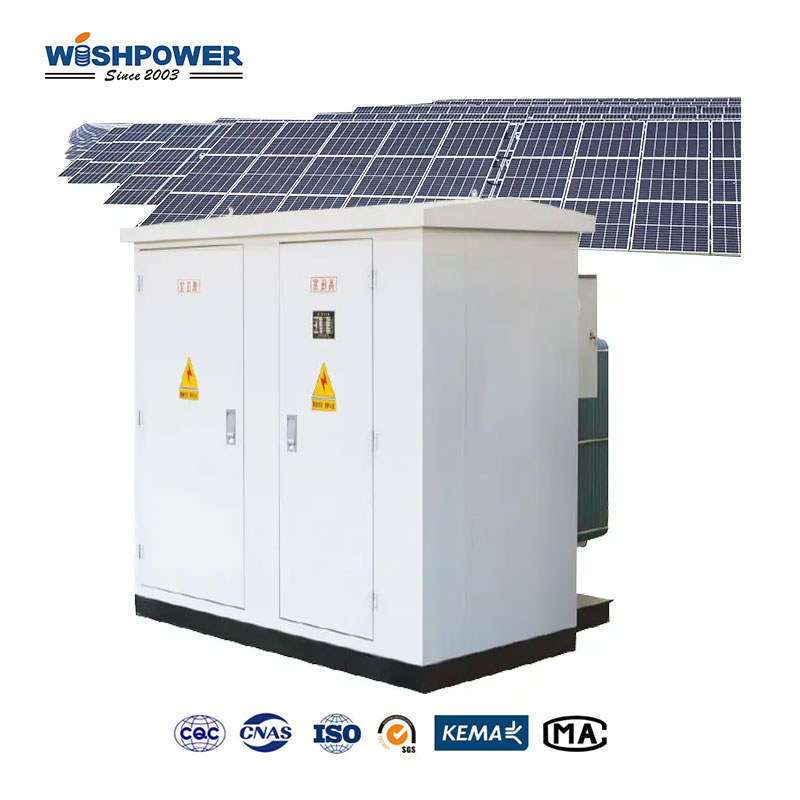Wind power now serves as a primary force in the creation of clean electricity because societies worldwide adopt renewable energy systems. The electrical grid benefits from integrated wind energy due to wind power transformers that perform this function. Specialized wind power transformers were created to meet the needs of wind energy systems by handling changes in power output and living through harsh atmospheric environments.

The Role of Wind Power Transformers
A wind power transformer functions as a specific transformer machine to enhance or decrease electrical voltage output from wind turbines. Wind turbines produce electricity through their generators at levels of voltage from 600 to 1000 volts. Electricity transmission becomes efficient when the initial low voltage passes through an increase in transformer output. Wind power transformers boost voltage output from wind turbines to mesh with power grids through voltage levels of 33 kV to 132 kV for mainland installations and higher ranges for sea-based operations.
These transformers carry out a vital function by efficiently transmitting wind farm-produced power to end users without major energy loss. Wind power transformers have built-in features that stabilize the electrical grid since changes in wind speed result in unpredictable turbine outputs. The stable voltage delivery combined with smooth power flow from wind power transformers helps control power grid stability by preventing equipment-damaging voltage fluctuations.
How Wind Power Transformers Differ from Conventional Transformers?
Adaptability to Fluctuating Power Generation
Wind power generation depends on continuous variations because of its natural intermittent nature. Wind turbine output rates experience substantial variations because of wind velocity and meteorological conditions together with surrounding environmental elements. Wind power transformers provide stability in voltage output despite the irregular variations of wind power generation. The normal transformer function occurs in established settings where power generation conditions remain steady.
Durability for Harsh Environments
Wind power transformers function in remote and offshore areas which subject them to harsh environmental conditions including extreme temperatures together with high humidity and saltwater exposure in offshore facilities. The demanding environmental conditions need wind power transformers to incorporate strengthened insulation components together with materials that resist corrosion. Wind power transformers operate conventionally in industrial zones instead of harsh environment locations.
Advanced Cooling Systems
The variable output of wind power generates frequent alterations in load through the transformer which results in temperature fluctuations. The transformers address these load variations through the installation of forced air or liquid-immersed cooling to maintain operational safety. The operation of conventional transformers remains steady enough that they do not need sophisticated cooling systems.
Key Features of Wind Power Transformers
Advanced Insulation Materials
Wind power transformers depend on their insulation systems as a core element for achieving operational reliability and extended lifespan. The insulation system of wind power transformers relies on high-performance materials including silicon rubber or epoxy resin to resist various environmental hazards, particularly in offshore conditions. The materials serve to defend transformers against external elements that pose performance risks.
Corrosion-Resistant Construction
Wind power transformers include construction elements that combat environmental attacks from harsh conditions. Special protective layers together with anti-corrosive materials serve to sustain offshore transformer function against saltwater and humidity exposure. Wind power transformers have reinforced external casing systems that protect equipment from weather conditions.
Smart Monitoring Systems
Modern wind power transformers include state-of-the-art monitoring systems that deliver real-time operational data for transformers. Monitoring systems track three essential parameters between temperature voltage and load conditions so predictive maintenance becomes possible combined with detecting potential system issues early. The monitoring systems become crucial for wind facilities that exist in distant areas because they assist with detecting problems before they become severe.
What is a wind transformer?
Wind power transformers serve as vital parts of wind energy systems because they ensure efficient and reliable transmission of wind-derived electricity to power grids. Wind power transformers exist specifically to fulfill the requirements of adapting to power generation variations while sustaining extreme weather elements and maintaining high operational efficiency. Wind power transformers will expand their critical position in maintaining the worldwide energy grid stability and sustainability because renewable energy requirements are increasing rapidly. The market sector dedicated to wind power transformers demonstrates strong indications of sustainable expansion because of advancing technologies smart grid integration and sustainability initiatives.
If you have different opinions or want to know more, please leave a message on the website or contact us directly at info@wishpower.net

















